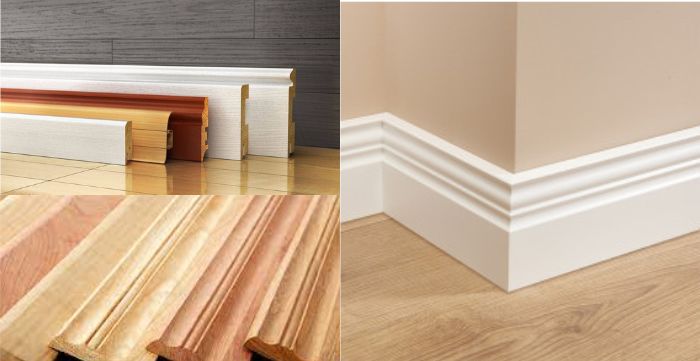
Skirting boards are more than just a decorative feature in our homes; they serve practical purposes as well. From protecting walls to adding a touch of elegance, skirting boards play a vital role in completing the overall look of a room. While skirting boards play various roles in our homes, they are not made equal. You can find that mdf skirting boards are more customizable and are more affordable, while PVC skirting boards are more beneficial for those with highly humid houses.
So, how do you know the best type of skirting board that is ideal for your home? Here’s a list of the top types of skirting boards and the main benefits they bring to your home.
1. Wooden skirting boards
Wooden skirting boards are a classic choice that adds warmth and natural beauty to any space. Here are some benefits of opting for wooden skirting boards.
- Versatility: Wooden skirting boards come in various wood species, allowing you to choose from a wide range of colors, textures, and finishes to match your interior design style.
- Durability: Wood is a sturdy material, making wooden skirting boards long-lasting and resistant to wear and tear.
- Easy maintenance: With regular cleaning and occasional refinishing, wooden skirting boards can maintain their charm for years.
- Environmental friendliness: Opting for sustainably sourced wooden skirting boards ensures that you contribute to the preservation of forests.
2. PVC skirting boards
PVC skirting boards offer a cost-effective and practical solution for modern homes. Here are the key benefits of PVC skirting boards:
- Moisture resistance: PVC is impervious to moisture, making it an ideal choice for rooms prone to humidity, such as bathrooms and kitchens.
- Easy installation: PVC skirting boards are lightweight and easy to cut, making them effortless to install. They often come with adhesive strips or clips for quick attachment to walls.
- Low maintenance: PVC skirting boards require minimal upkeep, as they are resistant to stains and easy to wipe clean.
- Versatility: PVC skirting boards come in a variety of colors and designs, allowing you to find the perfect match for your interior style.
3. MDF skirting boards
Medium-Density Fiberboard (MDF) skirting boards offer a cost-effective alternative to wooden skirting boards. Here are their notable benefits:
- Affordability: MDF skirting boards are generally more budget-friendly than their wooden counterparts while providing a similar aesthetic appeal.
- Easy customization: MDF skirting boards can be easily cut and shaped to fit any room size or design requirement.
- Smooth finish: MDF boards have a smooth surface that allows for flawless paint application, giving you the flexibility to achieve any desired color or finish.
- Resistance to warping: MDF skirting boards are less prone to warping or splitting, ensuring their longevity in various environments.
4. Tile skirting boards
Tile skirting boards seamlessly integrate with tiled floors, providing a polished and cohesive look. Here are the advantages of choosing tile skirting boards:
- Aesthetically pleasing: Tile skirting boards offer a seamless transition between the floor and walls, creating a clean and unified appearance.
- Easy maintenance: Tile skirting boards are effortless to clean and maintain, as they can be wiped or mopped along with the tiled floor.
- Compatibility: Tile skirting boards are an excellent choice for spaces with tiled surfaces, such as bathrooms, kitchens, and entryways.
Skirting boards are a valuable addition to any home, providing both functional and aesthetic benefits. Whether you opt for the timeless appeal of wooden skirting boards, the practicality of PVC or MDF, or the seamless integration of tile skirting boards, each type offers its unique advantages. Consider your style preferences, budget, and the specific requirements of each room when selecting the ideal skirting boards for your home.
